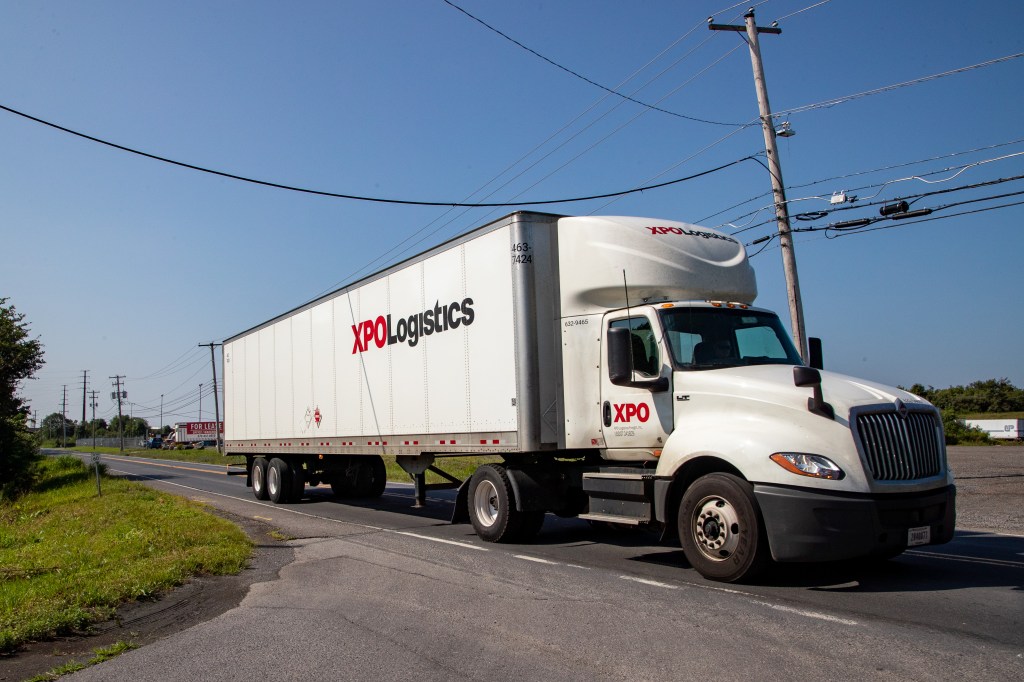
How Much Do Semi-Trucks Weigh?
Semi-trucks are big, though I probably didn’t need to tell you that. And while you’re driving down the highway, they take up a lot of space. But whenever you’re around trucks, it’s important to take into account how much bigger, and heavier, they are. So how much do semi-trucks actually weigh?

How Much Do Semi-Trucks Weigh?
Let’s start with just the semi-tractor, or the truck without the trailer. These big rigs can range from 10,000 to 35,000 lbs without a trailer, depending on how big the engine is. Add an empty trailer, which weighs about 10,000 lbs, and an unloaded semi-truck with a trailer is anywhere from 20,000 to 30,000 lbs.
Those are guesstimates provided by J.D. Power, but in terms of loaded trucks, the numbers are simpler. Under US law, a semi-truck load is limited to 80,000 lbs. And while the Gross Vehicle Weight Rating (which cargo, gas, passengers, and anything else in the truck) might be higher for some heavy-duty trucks, the weight of the trailer and cargo must be adjusted to be no more 80,000 lbs.
As you can imagine, driving an 80,000 lb semi-truck is different than driving a 3,000 lb car. So let’s look at a little math that proves the point.
Some scary math behind the weight of a semi-truck

I’m going to be using some scientific terms, but you don’t need to know what a joule is in order to understand my analogy. Using the equation “mass x velocity = kinetic energy,” a semi-truck weighing 80,000 lbs and driving 65 miles per hour has a kinetic energy of roughly 15,319,522 joules. Meanwhile, the kinetic energy of a shotgun bullet traveling 1,261 mph is 4,452 joules.
On top of that, the kinetic energy of your 3,000 lb car traveling at 65 mph is just 57,4482 joules. That’s less than 4% of the kinetic energy of that semi-truck. And if you wanted your car to exert the same level of kinetic energy as a semi-truck, it would need to be going 336 miles per hour. In other words, trucks are really powerful.
Now, that’s the power while the truck is at a constant speed. Eventually, these trucks have to stop. For passenger cars, it takes about 4.5 seconds when you slam on the brakes to come to a stop. However, semi-trucks, even with more advanced braking systems, can take 6.5 seconds to stop. Keep in mind, that doesn’t take rain or snow into account either.
What’s the point of all this? Well, semi-trucks are big, powerful, and take longer to stop. That’s why you should never mess with them.
Why you should never mess with a semi-truck

Not only do semi-trucks have blind spots everywhere, but they take longer to stop. A common practice of idiots who want to “get back” at truck drivers for being slow is by brake-checking them. Simply put, a car will get in front of a semi-truck, or any vehicle they’re mad at, and hit the brakes. If not caught on camera or witnessed, rear-ended accidents are often at the fault of the car behind the person who hit the brakes, and it all ends up being a mess in court.
But you won’t have to worry about ending up in court if you brake check a semi-truck. You’ll be dead. Or you can leave trucks plenty of room when you’re merging into their lane, and just be courteous. Driving a truck isn’t easy work, and it can be very lonely at times, being on the road for weeks at a time while the family is back home, or without a family altogether. So don’t be rude, be safe.


